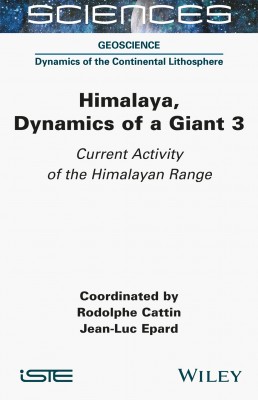
The Himalaya is well known as the largest and highest mountain belt on Earth. Advances in geoscience over the past few decades have revealed a complex picture of the dynamics of this giant, opening up questions about the initial stages of Himalayan building, lateral variations in its structures, variations in tectonic forcing, tectonic-climate coupling and assessments of the natural hazards affecting this area.
In this three-volume book, we present the current knowledge on the building and present-day behavior of the Himalayan range. The objective is not to be exhaustive, but to provide some key elements used by researchers to unravel the many processes acting in the Himalayan dynamics.
Mountain environments are at the forefront of climate change with glacier retreat, landslides, flash floods and water availability. Understanding the delicate balance that controls the dynamics of the Himalayan giant is now, more than ever, a major challenge for the scientific community.
Part 1. Surface Process.
1. Orogenesis and Climate, Frédéric Fluteau, Delphine Tardif, Anta-Clarisse Sarr, Guillaume Le Hir and Yannick Donnadieu.
2. Eroding the Himalaya: Processes, Evolution, Implications, Vincent Godard, Mikaël Attal, Saptarshi Dey, Maarten Lupker and Rasmus C. Thiede.
Part 2. Natural Hazards.
3. Glaciers and Glacier Lake Outburst Floods in the Himalaya, Christoff Andermann, Santosh Nepal, Patrick Wagnon, Georg Veh, Sudan Bikash Maharjan, Mohd Farooq Azam, Fanny Brun and Wolfgang Schwanghart.
4. Landsliding in the Himalaya: Causes and Consequences, Odin Marc, Kaushal Gnyawali, Wolfgang Schwanghart and Monique Fort.
5. Himalayan Surface Rupturing Earthquakes, Laurent Bollinger, Matthieu Ferry, Romain Le Roux-Mallouf, Jérôme Van Der Woerd and Yann Klinger.
6. Seismic Coupling and Hazard Assessment of the Himalaya, Sylvain Michel, Victoria Stevens, Luca Dal Zilio and Romain Jolivet.
Part 3. Focus.
7. Recent and Present Deformation of the Western Himalaya, François Jouanne, Jean-Louis Mugnier, Riccardo Vassallo, Naveed Munawar, Awais Ahmed, Adnan Alam Awan, Manzoor A. MALIK and Ramperu Jayangondaperumal.
8. The 2015 April 25 Gorkha Earthquake, Laurent Bollinger, Lok Bijaya Adhikari, Jérôme Vergne, György Hetényi and Shiba Subedi.
9. Crustal Fluids in the Nepal Himalaya and Sensitivity to the Earthquake Cycle, Frédéric Girault, Christian France-Lanord, Lok Bijaya Adhikari, Bishal Nath Upreti, Kabi Raj Paudyal, Ananta Prasad Gajurel, Pierre Agrinier, Rémi Losno, Chiara Groppo, Franco Rolfo, Sandeep Thapa, Shashi Tamang and Frédéric Perrier.
Rodolphe Cattin is a professor at the University of Montpellier, France. His activities performed in the Himalaya are on crustal structure imaging from ground and satellite observations, river dynamics and stress transfer associated with seismic events and surface processes.
Jean-Luc Epard obtained his PhD from the University of Lausanne, Switzerland (structural and Alpine geology) in 1990. He has been involved in 14 field expeditions in the Himalaya as participant or leader. His main area of expertise is the Mandi-Manali-Leh transect (India).